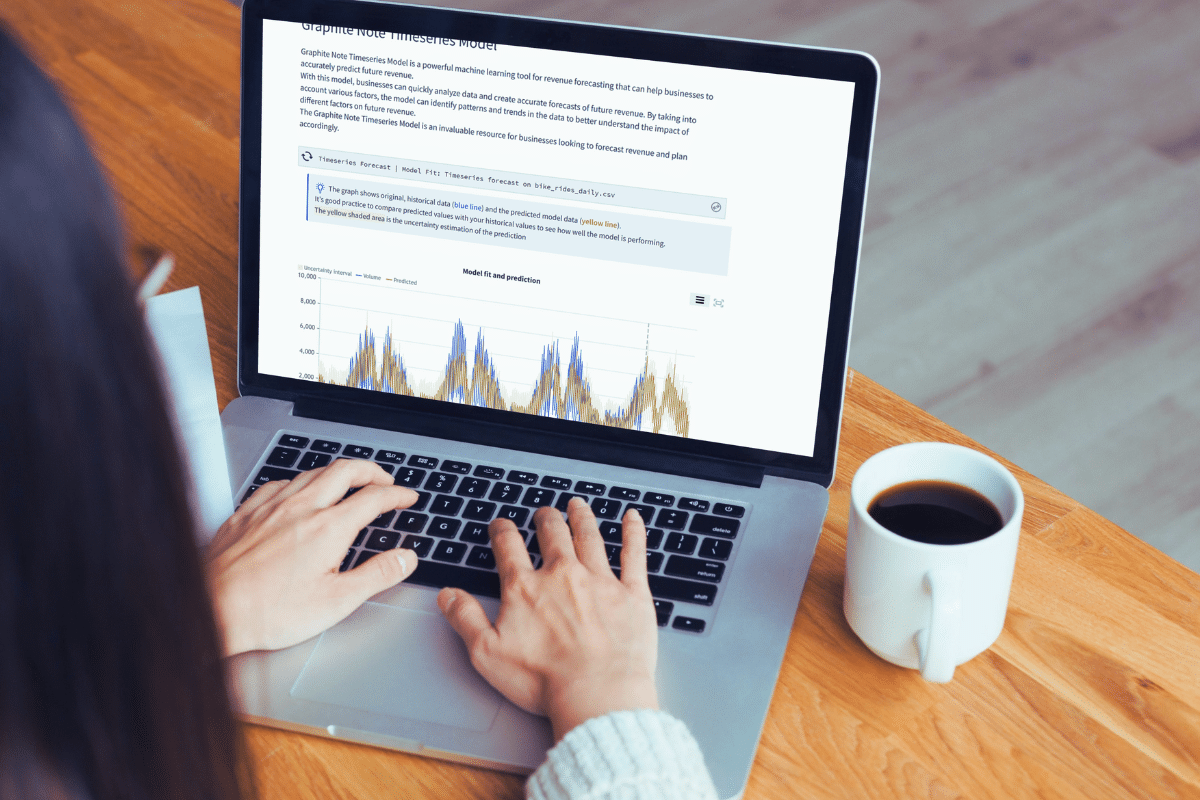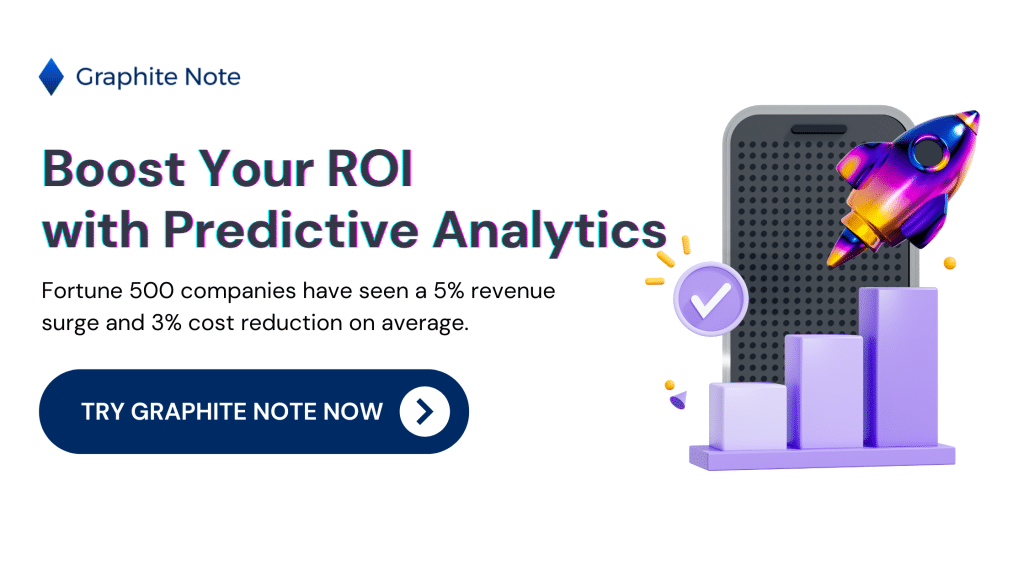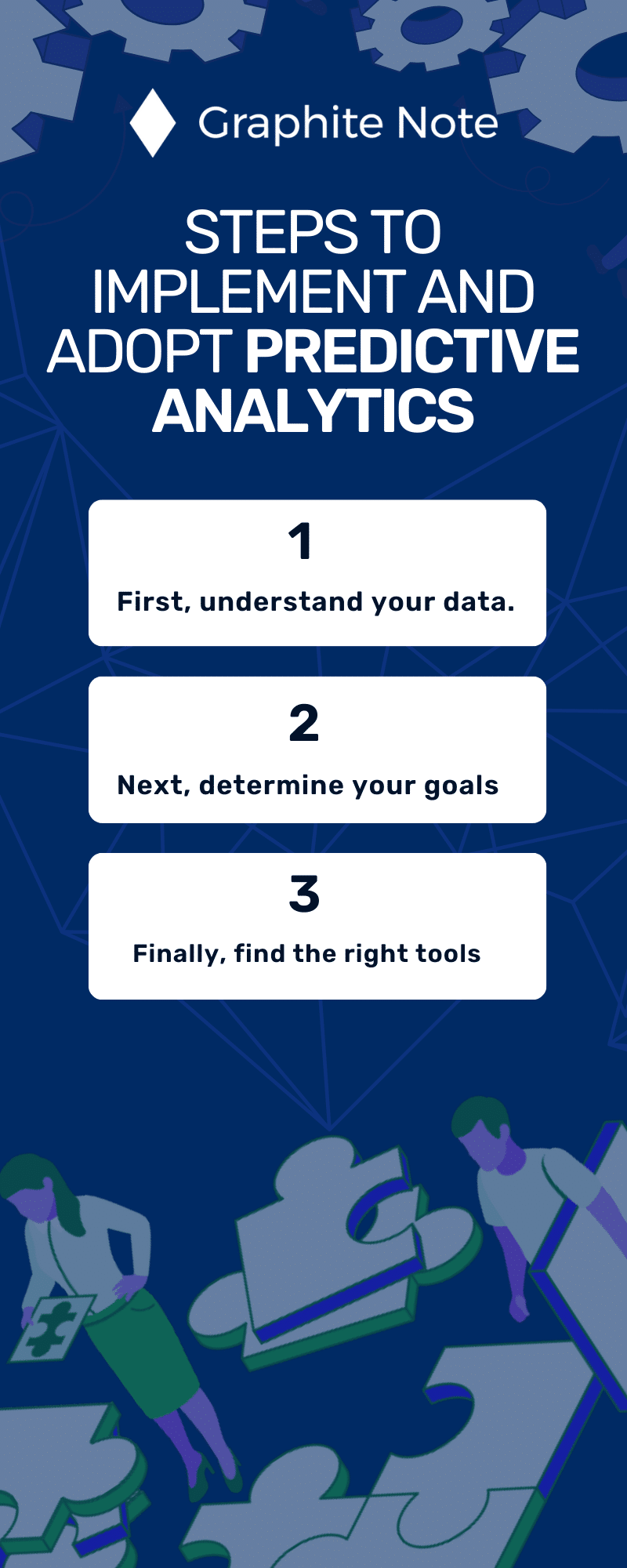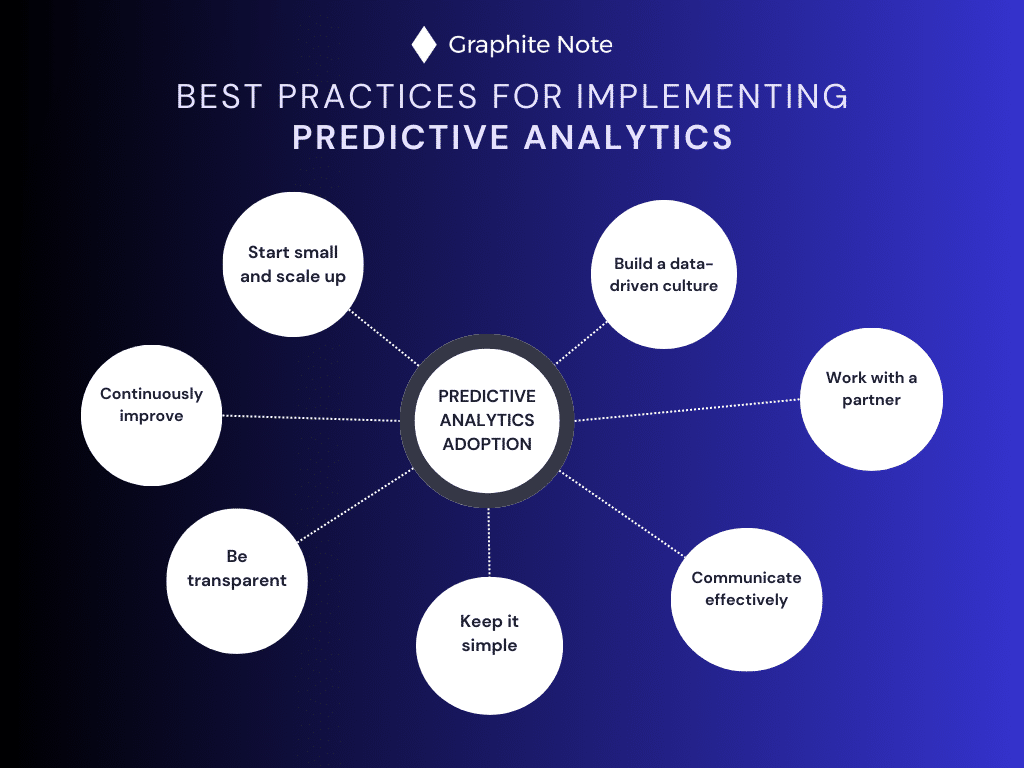With predictive analytics, you can make better decisions and stay ahead of your competition. Predictive analytics models can help you see what’s coming. Then, you can take action before it’s too late. Predictive analytics enables you to make data-driven decisions.
How to use predictive analytics in agriculture
A farmer wants to predict the weather to plan when to plant and harvest crops. They would use predictive analytics to analyze historical weather patterns and historical data. Using predictive analytics, they can create a weather forecast. A reliable weather forecast is key for a farmer to ensure his business operates well. By making data-driven decisions, they can increase crop yields and reduce waste.
How to use predictive analytics in software sales
A software company wants to predict which leads are most likely to convert into customers. They use predictive analytics to analyze lead data. Lead data can include: demographics, website activity, and previous interactions with the company. When they’ve identified which leads are most likely to convert, they can plan. They can focus their sales efforts on those leads and increase their conversion rate. As you can see, predictive analytics can be applied in a variety of industries and business functions.
The ROI of improved decision-making with predictive analytics
With the ability to analyze data and predict future outcomes, you can make informed decisions. This removes the guesswork from your business decisions. The more you use it, the clearer the picture becomes. With predictive analytics, you can make data-driven decisions that are accurate and faster. This can give you a competitive edge over your rivals

Companies using predictive analytics
A recent survey of Fortune 500 companies found that those using predictive analytics models saw an average of a 5% increase in revenue and a 3% decrease in costs. Companies were able to increase their revenue while decreasing their costs, leading to a higher return on investment (ROI).
Small businesses using predictive analytics
It’s not just big companies reaping the benefits. Small businesses can also use predictive analytics to make smarter decisions. A survey of small businesses found that those using predictive analytics techniques saw an average of a 6% increase in revenue, and a 4% decrease in costs. Predictive analytics can help small businesses to level the playing field. Your small business can compete with larger companies. Predictive models can help you make better decisions, increase revenue, and decrease costs. This leads to a higher ROI.

Using predictive analytics to increase business efficiency
Predictive analytics can increase efficiency by automating repetitive tasks. For example, you’re running a warehouse, and you want to know which items are running low on stock. In the past, you would have to manually check each item and make a list. With predictive analytics, you can set up an automatic stock check system. The system can then alert you when it’s time to reorder. This saves time and eliminates the risk of human error.
Using predictive analytics to identify bottlenecks
Predictive analytics can also increase efficiency by identifying bottlenecks in your operations. For example, you’re running a call center, and you want to know which agents are handling the most calls. With predictive analytics, you can track agent performance in real time. You can identify which agents are struggling. You can take steps to help them improve their performance and make sure calls are being well handled. This can save a lot of time and money and improve customer satisfaction. Predictive analytics can help you increase efficiency in various business functions. Predictive analytics enable you to automate repetitive tasks, identify bottlenecks, and track performance. Predictive models can save you time and money, and improve your customer satisfaction.
Costs savings with predictive analytics
Predictive analytics can help you increase efficiency in a variety of ways. Here are a few examples of businesses that have successfully used predictive analytics:
- A retail giant uses predictive analytics to predict demand for products. They can then optimize their inventory. This helped them to reduce the number of products that go out of stock. It also helped them minimize the amount of overstocked items. They were able to increase their sales. They were also able to reduce costs associated with inventory management.
A manufacturing company uses predictive analytics to predict when machines are likely to break down. They can identify this potential problem before it occurs. This way, the company is able to schedule maintenance at the most convenient times. This reduces downtime and increases production. This saves money on repairs and ensures that the company can meet customer demand. Predictive analytics helped them to make better use of resources and improve quality control.
Supply chain management and predictive analytics
Predictive analytics can lead to cost savings in supply chain management. Predictive analytics can be used to predict potential disruptions and delays. Using predictive analytics, businesses can address issues and prevent costly downtime. Predictive analytics can also help businesses identify potential cost savings. This could include areas like logistics and transportation. By using data to make informed decisions, businesses can negotiate better deals with suppliers. Businesses can also reduce transportation costs and improve delivery times. These savings add up and have a significant effect on the bottom line.
Predictive analytics and business profitability
Predictive analytics helps you predict what’s going to happen in the future. Predictive analytics enables you to make smarter decisions today. One of the biggest ways it can save you money is by helping you optimize your costs and supply chain management. Predictive analytics can help you identify where you’re spending too much. Predictive analytics can help you identify where you can cut back. Businesses can use this information to optimize their operations and reduce unnecessary costs. Predictive analytics can be the key to running a leaner, more profitable business.
Predict customer churn with predictive analytics
Predictive customer churn also can help you identify at-risk customers. You can then take steps to keep them. A telecommunications company can use predictive analytics to analyze customer data. Using predictive models, they can identify which customers are most likely to cancel. By reaching out to these at-risk customers and offering special promotions, they reduced their customer churn rate by 15%. Using predictive analytics for sales forecasts can help you make accurate financial projections. An e-commerce company used predictive analytics to forecast its sales and adjust its inventory levels. This helped them to avoid stockouts and overstocking. This reduced their carrying costs and increased supply chain management.
Best practices for implementing predictive analytics for business
Implementing predictive modeling in your business may seem like a daunting task. It does not have to be. By following these steps, you can start reaping the benefits of improved decision-making. Your business can also benefit from increased efficiency, and cost savings.
Steps to implement and adopt predictive analytics
Understand your data
First, understand your data. Before you can make accurate predictions, you need to have a good understanding of your data. You need to identify the data that is relevant to your business and make sure it is clean and accurate. Remember to cater for all types of variables, including independent variables.
Determine your goals
Next, determine your goals. What do you want to achieve with predictive analytics? Identify specific goals to help you focus your efforts. This helps you make sure you are getting the most out of your investment. Identifying specific goals will help you understand what you want to use predictive analytics for. You may want to undertake regression analysis, create regression models, look at linear regression, or other classification models. Time series models may also be useful for your business. Understanding the different types of data science models can help you to make more informed choices. Do your research on regression analysis, linear regression, data mining, classification models, time series models, and decision trees. There are a wide range of potential uses for predictive analytics within your business.
Find the right tools
Finally, find the right tools. There are a variety of predictive analytics tools available, so it’s important to find the one that best fits your needs. Look for tools that are easy to use, have a good track record, and are backed by a strong community of users.
No-code machine learning and predictive analytics
One powerful option is no-code machine learning. No-code machine learning enables non-technical teams to build, test and deploy predictive models. With no-code ML, teams can gain insights from their data without technical training or specialized personnel. It’s excellent for businesses looking to gain a competitive edge through predictive analytics.
Implementing predictive analytics in business
By following these steps, you can implement predictive analytics in your business:
- Start small and scale up: Predictive analytics can seem overwhelming. Starting with a small project can help you learn the ropes and gain buy-in from stakeholders. Once you’ve seen success, you can scale up and expand to other areas of the business. Start with a small data mining project, or try out different classification models. Figure out if predictive models, regression models, time series models, or other classification models are best suited for your objectives.
- Build a data-driven culture: Predictive analytics relies on data. It’s important to have a culture that values and prioritizes data. Make sure your team understands the importance of data. Historical data and current data can be very useful for decision-making.
- Work with a partner: Implementing predictive analytics can be complex. It’s often helpful to work with a partner who has experience and expertise in the field. They can help you navigate the technology and ensure a smooth implementation. If you’re not sure where to find the right partner for your predictive analytics journey, you might want to consider hiring a data consultant from Toptal. They offer access to top-tier data consultants who can guide your strategy and implementation.
- Communicate effectively: Successful predictive analytics implementation requires clear and effective communication. Make sure that everyone is on the same page. Ensure they understand the goals, objectives, and benefits of predictive analytics.
- Keep it simple: Predictive analytics can be complex, but it doesn’t have to be. Avoid unnecessary complexity. Use simple and easy-to-understand language when communicating about predictive analytics.
- Be transparent: Being transparent about the data and predictions generated by predictive analytics is key. This helps to build trust and acceptance among all stakeholders. Make sure to explain the process and results, and be open to feedback and questions.
- Continuously improve: Implementing predictive analytics is an ongoing process. Make sure to review and analyze the results and adjust your strategy as needed. Continuously improve your processes and predictions to ensure maximum effectiveness. Keep a good flow of data and information coming into your machine learning project. Current data can help to guide your machine learning model even further. Other independent variables could also play a part. Look out for those as you finetune your approach to predictive analytics.

Challenges of implementing predictive analytics in business
When implementing and adopting predictive analytics, there are a few hurdles you may face. One of the biggest challenges is data quality. For predictive analytics to be effective, businesses need to have accurate and complete data. Many organizations struggle with collecting, cleaning, and maintaining their data. Without high-quality data, the insights generated by predictive analytics may be unreliable.
Another obstacle businesses may encounter is a lack of expertise. Predictive analytics can be a complex field. Many organizations may not have the necessary skills and knowledge to implement and use these tools. It’s important to have a dedicated team or work with a reputable vendor that can provide support and guidance.
Change management can be a challenge. Adopting predictive analytics requires a shift in how an organization operates. Some employees may be resistant to change. It’s important for businesses to communicate the benefits of predictive analytics to all stakeholders. You should also provide training and support to ensure a smooth transition.
The future of predictive analytics in business
Predictive analytics is like a superpower for businesses, but it doesn’t have to be complicated. With no-code predictive analytics, even those without a background in data science or machine learning can reap the benefits. With no-code predictive analytics, that’s exactly what you can do. It’s like having a team of data scientists without the expense.






